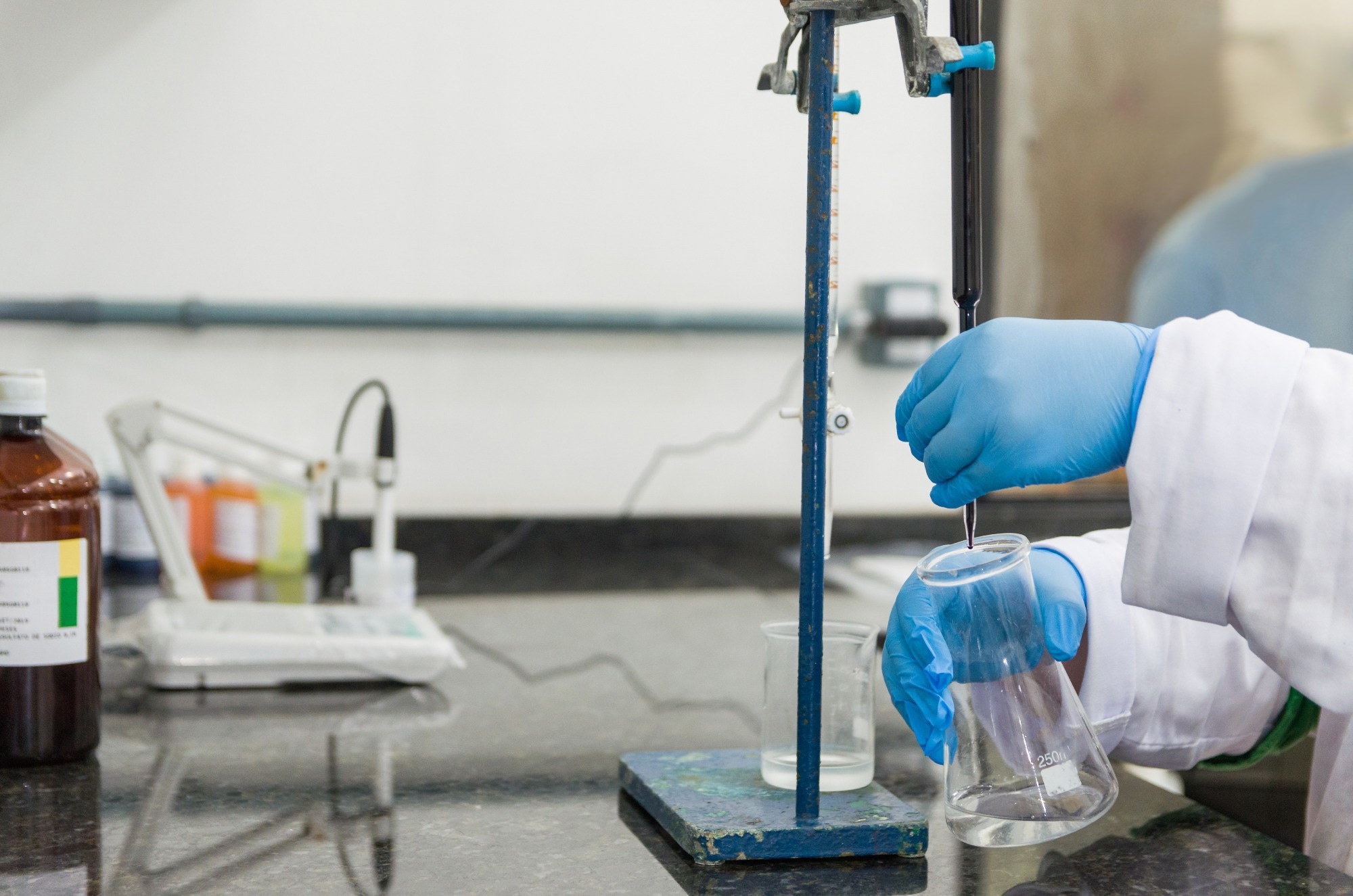Karl Fischer (KF) titration has been used successfully to estimate water content in diverse samples for almost 90 years, dating back to 1935.1

Image Credit: ThiagoSantos/Shutterstock.com
The method has maintained its position as the gold standard for water determination due to its specificity, precision, dependability, and speed.
Water, iodine, sulfur dioxide, and a base are reacted in a suitable solvent during the determination process. Methanol was traditionally employed as the solvent and imidazole as the base.
However, recent formulations have used a variety of substitutes and combinations of these components for successful KF titration.
The standard chemical reaction is given by the following equation:2
| CH3OH + SO2 + I2 + H2O + 3 RN → (RNH) · (CH3OSO3) + 2 (RNH) · I |
Equation 1 |
Water (H2O), iodine (I2), sulfur dioxide (SO2), the base (RN), and the solvent (MeOH) all play active roles in the reaction. Iodine is the titrant, while sulfur dioxide, the base, and the solvent should be provided in abundance to allow for a quick reaction between water and iodine.
Water's pervasive presence complicates the procedure because any water present not from the sample distorts the measured content. As a result, keeping water out of the reaction system is critical for ensuring accurate measurements.
Modern KF titration equipment uses a closed titration vessel (KF cell) from which any water is removed, ensuring that the KF cell is dry prior to the actual sample determination. This procedure is known as pretitration.
In addition, because even closed KF cells are not completely water-tight, water entering the dry KF cell must be compensated for by adding or producing iodine in a regulated manner to avoid biased results.
Cell conditioning is the combined processes of pretitration and the determination and compensation of incoming water. This method ensures that the cell stays dry until a sample is introduced.
Sophisticated control algorithms are required for both sample determination and cell conditioning to ensure quick and accurate results under varying and changing conditions. These algorithms rely on the observed signal of a polarized sensor, and there are two methods for measuring in such a setup: bivoltametric or biamperometric indication.
References
- Fischer, K. (1935). Neues Verfahren zur maßanalytischen Bestimmung des Wassergehaltes von Flüssigkeiten und festen Körpern. Angewandte Chemie, 48(26), pp.394–396. DOI: 10.1002/ange.19350482605. https://onlinelibrary.wiley.com/doi/10.1002/ange.19350482605
- Scholz, E. (1984). Karl Fischer Titration. In Chemical Laboratory Practice. Springer Berlin Heidelberg. DOI: 10.1007/978-3-642-69989-4. https://link.springer.com/book/10.1007/978-3-642-69989-4.
- METTLER TOLEDO, GTP Brochure: Good Titration Practice in Karl Fischer Titration. Available at: https://www.mt.com/in/en/home/library/collections/lab-analytical-instruments/Good_Titration_Practice.html.
- Linh. 2.5.12. Water semi-micro determination. Available at: https://www.scribd.com/document/681905573/2-5-12-Water-semi-micro-determination.

This information has been sourced, reviewed, and adapted from materials provided by Mettler-Toledo - Titration.
For more information on this source, please visit Mettler-Toledo - Titration.